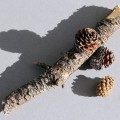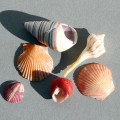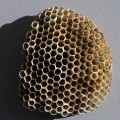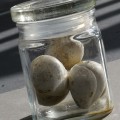My Process
Why my paintings are special.
Every time I leave the house I am looking at everything for possible paintings. I have expensive camera equipment that I use for reference photos. I take hundreds of reference photos just to get one special shot that will make a successful painting.
I also collect feathers, wood, stones, plants and dead insects to use for reference.
For years I painted from life and still do in order to make my subjects look real when I use photographs for reference. I have drawn plants birds and animals and observed them thoroughly, so I am familiar with my subjects.
And that’s before the painting process even starts.
I use boards mostly and sometimes canvas. I paint the surface with gesso and sand the dry surface between coats. I usually do this 8 times until the surface is smooth as vellum. I transfer my finished sketch to this board and paint in the background.
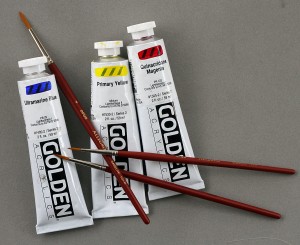 Using very tiny watercolour brushes and acrylic paint, I build up layer after layer of transparent coats of paint to create rich layers of colour. There are no visible brush strokes when the painting is finished. I’m often asked if I have used technology in some way to create the painting. Because the surface is so smooth and there’s lots of detail, even close up, people don’t trust that it’s an original painting.
Using very tiny watercolour brushes and acrylic paint, I build up layer after layer of transparent coats of paint to create rich layers of colour. There are no visible brush strokes when the painting is finished. I’m often asked if I have used technology in some way to create the painting. Because the surface is so smooth and there’s lots of detail, even close up, people don’t trust that it’s an original painting.
I use only the best and most expensive materials. Each painting has an isolation coat, which means the top coat of varnish can be removed without damage to the painting. It is then finished with a coat of archival quality UV varnish.
The process takes weeks to complete a single painting and I paint only around 15 to 20 paintings each year. Galleries are constantly asking me for originals and they sell straight away. In 2007 I took several months break to illustrate a book and I’m still trying to catch up on my gallery inventory. I have new galleries calling to ask if they can sell my originals but I have to decline because I can’t keep up with the 5 galleries that represent me now.
I rarely take on commissions, preferring people to see a painting and fall in love with it. When I do take on a commission I will only paint a subject that I would normally paint, that way if the customer is unhappy with it I will sell it through a gallery. I don’t want anyone to buy a painting they are not totally in love with.
People often say my paintings look so detailed, like photographs, but each one is carefully drafted so there are ‘soft’ more impressionistic areas where the detail is lacking and hard clean edges that catch the eye. Lost and found edges.
I also include insects in each painting, each one accurate according to the season and location. Some are hidden and others are more obvious. Gallery owners tell me that people crowd round close to the paintings to try and find them.
I collect reference materials from various sources: from my own yard to the Arctic Circle. This involves, expensive travel and sometimes dangerous terrain and close proximity to wildlife, to just uncomfortable days of camping in cold, wet conditions, to hiking up mountains carrying heavy camera equipment to get a special view

